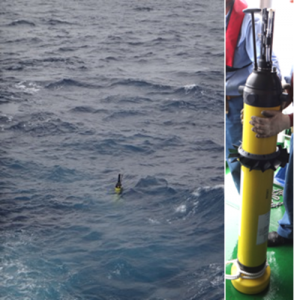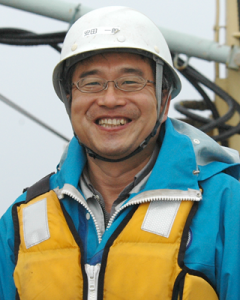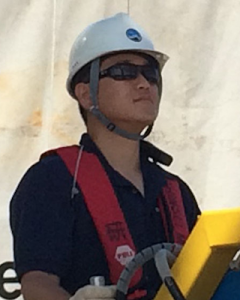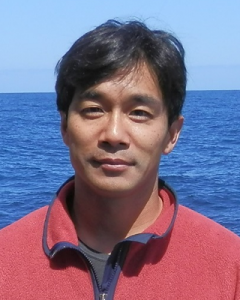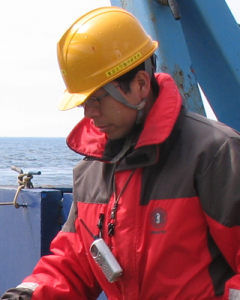A01-1 Group
A01-1 Development of methods and systems for vertical mixing and observations
Research Summary
Direct observations of vertical mixing down to intermediate to deep oceans have been quite scarce, despite of their importance. In order to know the distribution of vertical mixing and generating mechanisms in the western North Pacific and to elucidate the influence on ocean circulations, this team develop/introduce/make practical following two observational systems that are capable to concurrently observe turbulence with vertical mm-scales and currents with 10m-scale which can be resolved by numerical models, and perform in-situ observations. 1) Autonomous observation system of multiple underwater gliders (see Fig. 1) with turbulence sensors and ADCP (Acoustic Doppler Current Profiler), which freely move and observe microstructure and currents with repeat of dive and climb from surface to 1000m depths, 2) Development and modification of turbulence estimate with fast response thermistors attached to CTD platform, and obtain microstructure data down to deep/intermediate depths or bottom by use of Japan Meteorological Agency CTD observational array (Fig. 2) and routine observational network of Japan Fisheries Research Agency. Also long-term time series observations with autonomous floats with geomagnetic current sensors (Fig. 3) or turbulence sensors are to be performed. These new observing systems will be tested in the real oceans in the Tohoku Area, and will be used in research cruises under corporations with other teams.
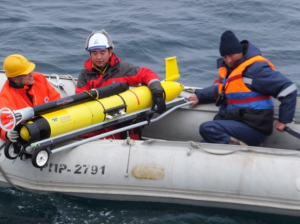
Fig. 1. Recovery of a glider with turbulence and current sensors in the Russian vessel cruise in July 2014.
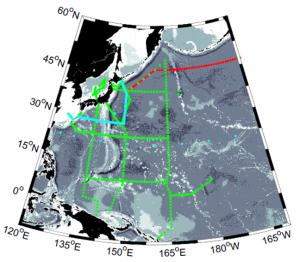
Fig. 2. Observational stations for fast-response thermistors attached to CTD. The Green dots represent Meteorological Agency annual CTD network, sky-blue dots Hakuho-maru cruise stations in 2017, and red dots JAMSTEC (A01-2) WOCE-P01 trans-Pacific 2014 observations.
Members
Principal investigator: Ichiro Yasuda (Professor, Atmosphere and Ocean Research Institute (AORI), The University of Tokyo, Physical Oceanography)
Co-investigator: Daigo Yanagimoto (Assistant Professor, AORI, The University of Tokyo, Physical Oceanography)
Co-investigator:Ryuichiro Inoue (Senior Scientist, JAMSTEC, Physical Oceanography)
Co-investigator: Daisuke Hasegawa (Scientist, Japan Fisheries Research and Education Agency, Physical Oceanography)
Collaborator: Masao Ishii (Section Chief, Meteorological Research Institute, Chemical Oceanography)
Collaborator: Eitarou Oka (Associate Professor, AORI, The University of Tokyo, Physical Oceanography)
Collaborator: Maki Nagasawa (Technical Specialist, AORI, The University of Tokyo, Physical Oceanography)
Joint Cooperator: Toshiya Nakano (Senior Scientific Officer, Japan Meteorological Agency, Physical Oceanography)
Joint Cooperator: Takahiro Tanaka (Research Fellow, AORI, The University of Tokyo, Physical Oceanography)
Joint Cooperator: Yasutaka Goto (Graduate Student, AORI, The University of Tokyo, Physical Oceanography)
